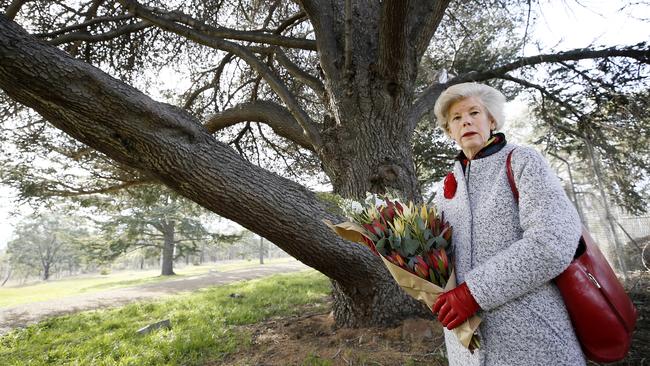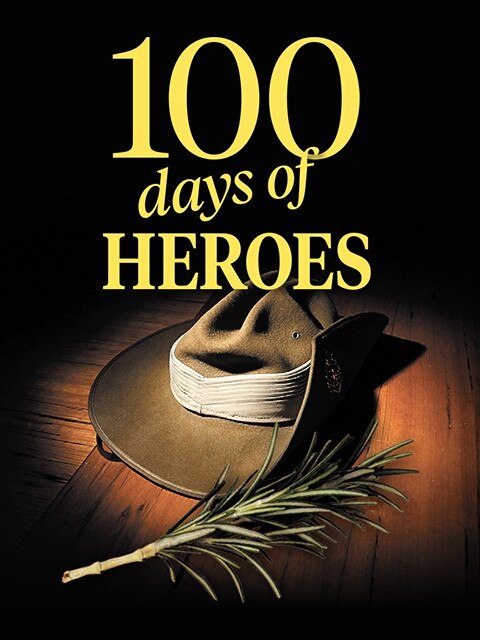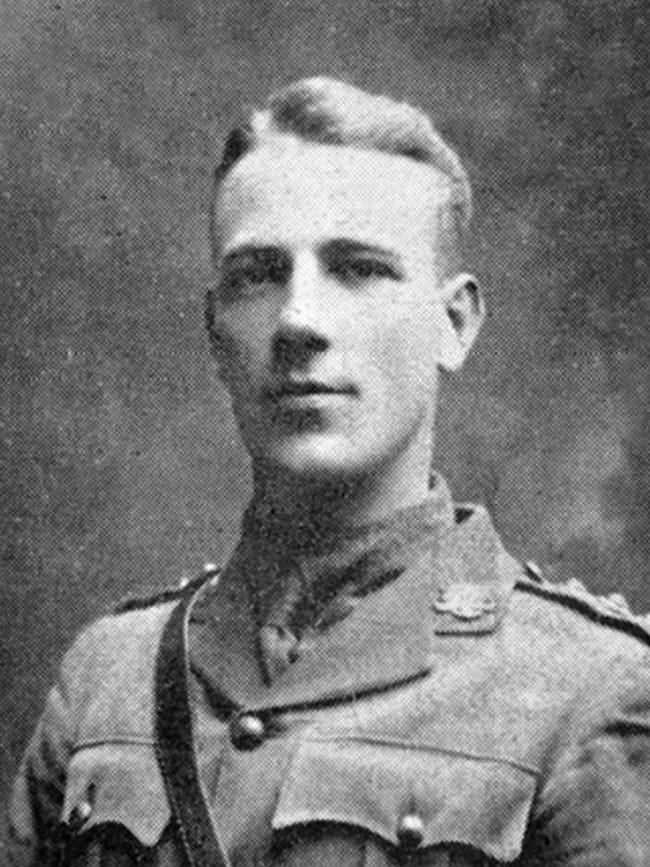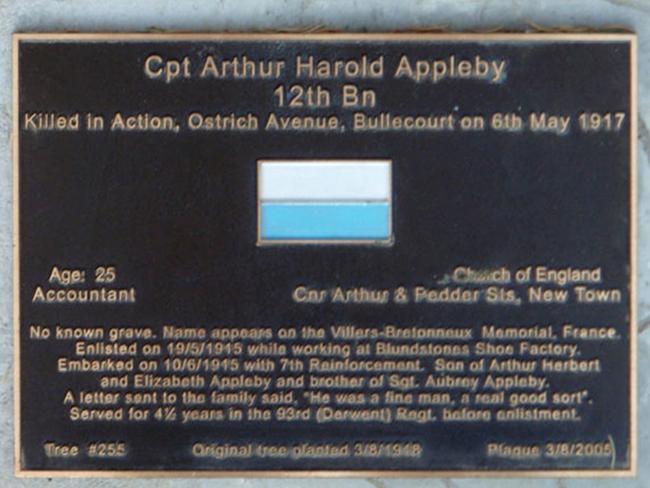100 Days of Heroes: Family holds on to hope that Captain Arthur Appleby’s remains will be found
ANDREA Gerrard still holds out hope that the remains of her great uncle, Arthur Harold Appleby, will be found on one of the former battlefields of World War I.

Tasmania
Don't miss out on the headlines from Tasmania. Followed categories will be added to My News.
ANDREA Gerrard still holds out hope that the remains of her great uncle, Arthur Harold Appleby, will be found on one of the former battlefields of World War I.
Arthur, who was known as “Uncle Harold,” was buried near where he fell at Bullecourt, France, in May 1917.
The burial site was destroyed during ensuing battle and Arthur’s remains were never found.
“It was my mother’s dying wish that we found him,” Mrs Gerard said yesterday.
“Arthur’s brother [and fellow soldier] Aubrey, visited where he was buried within days of his death,” Mrs Gerrard said.
“The fact that Aubrey had been able to see where his brother was buried and pay his respects meant a lot to him.”
MORE 100 DAYS OF HEROES:
LIONEL GARLICK SURVIVED ILLNESSES BUT NOT THE BATTLEFIELD
VICTOR CAPSTICK’S REMAINS WERE NEVER RECOVERED

Mrs Gerrard has visited France and walked the site of the battlefield on several occasions. “There is little cross on the side of the road and I always put something there and leave flowers for him at Villers-Bretonneux,” she said.
Mrs Gerrard last week received the Medal of the Order of Australia in recognition of her service to veterans and their families through the Tasmanian Headstones Project which installs headstones on previously unmarked graves of World War I soldiers.
The hope that Arthur may one day have a grave of his own is not necessarily a forlorn one, as more than 100 diggers have been identified in recent years with the aid of forensic science, DNA and historical data.
Arthur was the eldest of two sons to Arthur and Elizabeth Appleby, born at Launceston in 1892.
The couple died while their sons were young and Arthur was raised by his maternal grandfather at Railton while his brother ended up in state care.
“It’s incredibly sad the brothers were split up,” Mrs Gerrard said. “They kept in contact but were never close again.”

Arthur worked as an accountant for Blundstone and Sons and was a talented lacrosse player before enlisting in November 1914. He was appointed as a second lieutenant due to his previous military experience.
He was promoted to lieutenant and then captain following his service at Gallipoli and a training stint in Egypt.
In May 1917, the 1st Division made a push to break the Hindenburg Line at Bullecourt.
Against the odds, the men of Arthur’s 12th Battalion successfully captured and occupied a German trench and were subjected to heavy enemy shellfire.
In the confrontation, Arthur was hit by a large shell fragment and succumbed to his wounds on May 6, 1917, aged 25.
According to the men of the 12th Battalion Arthur was “a fine man, a real good sort.”
Arthur is remembered at the Australian National Monument at Villers-Bretonneux, France
and tree 255 on the Soldiers’ Memorial Avenue.
Cameron Allen is a UTAS media student.
MORE 100 DAYS OF HEROES:
SICKNESS STRUCK AS JAMES FISHER SAILED TO WAR
DOUBLE THE PAIN FOR WICKINS BROTHERS’ MUM



